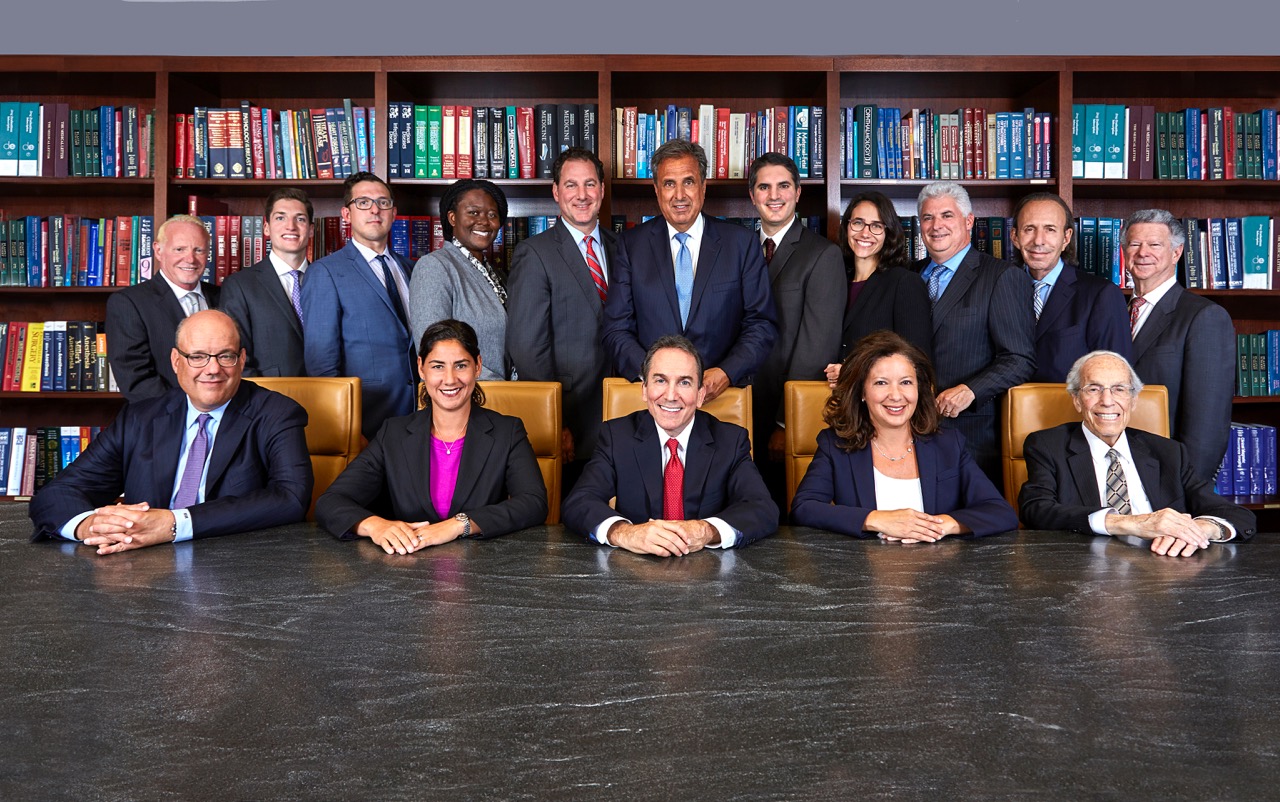Best Personal Injury Lawyer NYC: Navigating the complexities of personal injury law in New York City can feel overwhelming. Finding the right legal representation is crucial for protecting your rights and securing the compensation you deserve after an accident or injury. This guide provides a comprehensive overview of the key factors to consider when selecting a personal injury lawyer in NYC, from evaluating their experience and fees to understanding the legal process and negotiation strategies. We’ll delve into crucial aspects like case success rates, communication styles, and the importance of a strong support staff, empowering you to make an informed decision.
This detailed exploration will equip you with the knowledge needed to choose a lawyer who aligns with your specific needs and goals, ensuring a smoother and more effective legal journey. We will examine different fee structures, review strategies for verifying online testimonials, and discuss the critical role of communication and accessibility in building a successful attorney-client relationship. Understanding the intricacies of insurance company interactions and the various stages of a personal injury lawsuit will be key elements in our discussion. Ultimately, the goal is to help you find the best personal injury lawyer in NYC to advocate for your interests.
Lawyer Selection Criteria in NYC
Choosing the right personal injury lawyer in New York City is crucial for a successful outcome in your case. The sheer number of lawyers available can be overwhelming, making careful consideration of several key factors essential to finding the best fit for your needs. A well-informed decision can significantly impact the compensation you receive and the overall experience of navigating the legal process.
Navigating the legal landscape of New York City requires careful consideration of several factors when selecting a personal injury lawyer. The following table Artikels key aspects to evaluate, aiding you in making an informed decision.
Finding the best personal injury lawyer NYC has to offer is crucial for maximizing your compensation. The process, however, is similar across different locations; for instance, securing skilled representation is just as vital in New Orleans, where you might seek a new orleans injury lawyer for similar legal needs. Ultimately, the key in both NYC and New Orleans is finding an attorney with a proven track record of success in personal injury cases.
Factors to Consider When Choosing a Personal Injury Lawyer in NYC
| Factor | Importance | How to Evaluate | Example |
|---|---|---|---|
| Experience | High – crucial for successful case management | Review lawyer’s resume, case history, and client testimonials. Look for specialization in personal injury law. | A lawyer with 20+ years specializing in car accident cases in NYC has a demonstrably higher success rate than a general practitioner with limited experience in personal injury. |
| Specialization | High – expertise in specific injury types improves outcomes | Check if the lawyer focuses on personal injury and, more specifically, the type of injury you sustained (e.g., medical malpractice, construction accidents). | A lawyer specializing in medical malpractice will possess a deeper understanding of medical terminology and procedures relevant to your case than a general personal injury lawyer. |
| Reputation and Reviews | High – reflects lawyer’s track record and client satisfaction | Research online reviews on sites like Avvo, Yelp, and Google My Business. Look for consistent positive feedback. | Numerous positive reviews praising a lawyer’s communication, responsiveness, and successful case outcomes indicate a strong reputation. |
| Fees and Payment Structure | Medium – transparency and affordability are important | Clearly understand the fee structure (contingency fee, hourly rate, etc.) and any associated costs. | A contingency fee arrangement means the lawyer only gets paid if you win your case, usually a percentage of the settlement. |
| Communication and Responsiveness | High – ensures clear updates and efficient case management | Schedule a consultation to assess the lawyer’s communication style and responsiveness to your questions. | A lawyer who promptly returns calls and emails demonstrates a commitment to client communication and accessibility. |
| Trial Experience | Medium-High – crucial for negotiating strong settlements or winning at trial | Inquire about the lawyer’s trial experience and success rate. Not all cases go to trial, but this experience strengthens negotiating power. | A lawyer with extensive trial experience is better equipped to handle the pressure of litigation and advocate effectively for your rights. |
General Practice Lawyers vs. Personal Injury Specialists in NYC
General practice lawyers handle a wide range of legal matters, while personal injury specialists focus solely on cases involving personal injuries. Specialists possess in-depth knowledge of personal injury laws, regulations, and procedures specific to New York City, providing a significant advantage in handling complex cases. A specialist’s experience with similar cases, expert witnesses, and insurance companies often leads to better outcomes compared to a general practitioner. The level of expertise and resources dedicated to personal injury cases by a specialist significantly impacts case strategy and results.
The Importance of a Lawyer’s Experience with Similar Cases in NYC
A lawyer’s experience with cases similar to yours is invaluable. This experience encompasses understanding the specific legal nuances, navigating the complexities of NYC courts and insurance companies, and building relationships with relevant experts. A lawyer who has successfully handled numerous cases involving similar injuries, accident types, and defendants will possess a deeper understanding of the challenges and strategies involved, leading to a higher likelihood of a favorable outcome. For example, a lawyer with extensive experience in construction accident cases in NYC will be familiar with the specific regulations, common causes of accidents, and the types of evidence required to build a strong case. This specialized knowledge is far more beneficial than a general understanding of personal injury law.
Fees and Payment Structures

Understanding how personal injury lawyers in NYC charge is crucial for clients. The fee structure significantly impacts your financial responsibilities and potential financial recovery. Choosing the right lawyer often depends on your understanding of these different payment models.
Choosing a fee structure is a critical decision in your personal injury case. It directly impacts your financial obligations and potential return. Let’s examine the most common fee arrangements used by New York City personal injury lawyers.
Contingency Fees
Contingency fees are the most common arrangement in personal injury cases. Under this structure, the lawyer’s fee is a percentage of the monetary compensation you receive. If your case is unsuccessful and you receive no compensation, you generally owe the lawyer nothing. However, the percentage varies depending on the complexity of the case and the stage at which the settlement or verdict is reached. A typical range is between 33% and 40%, but it could be higher or lower depending on the circumstances.
Hourly Rates
Some lawyers, particularly those handling specific aspects of a case (like expert witness coordination), may charge an hourly rate. This means you pay them for the time they spend working on your case, regardless of the outcome. Hourly rates are generally higher than contingency fees’ percentage-based rates. This structure provides greater transparency regarding legal costs, but the overall cost could be significantly higher than a contingency fee if the case extends over a long period.
Hybrid Fee Arrangements
Some lawyers may offer a hybrid approach, combining elements of both contingency and hourly fees. For instance, they might charge an hourly rate for initial consultations and specific tasks while using a contingency fee for the overall case outcome. This approach allows for a blend of predictability in initial costs and the potential for a significant payout if the case is successful. However, it requires a clear understanding of how the hourly and contingency components will be applied throughout the case.
Comparison of Fee Structures
The following table compares three common fee structures, highlighting their advantages, disadvantages, and risk factors.
| Fee Structure | Upfront Costs | Potential Payout | Risk Factors |
|---|---|---|---|
| Contingency Fee (33%-40%) | Typically minimal or none | High potential payout, but percentage goes to the lawyer | No guarantee of compensation; lawyer’s incentive is aligned with case success |
| Hourly Rate ($300-$700/hour) | Ongoing costs accumulate with each hour worked | Potentially lower net payout due to legal fees | Predictable cost but can be expensive; outcome does not affect the fee |
| Hybrid Fee (e.g., Hourly for initial consultation, Contingency for settlement) | Initial hourly fees for consultation and specific tasks | Potential for high payout, mitigated by initial hourly costs | Requires clear understanding of fee breakdown; risk depends on contingency percentage and hourly rates |
Case Success Rates and Outcomes

Choosing a personal injury lawyer in NYC requires careful consideration of their track record. A lawyer’s success rate in securing favorable settlements or verdicts significantly impacts your chances of receiving fair compensation for your injuries and losses. While past performance doesn’t guarantee future results, it provides valuable insight into a lawyer’s experience, skills, and strategic approach to personal injury cases.
A lawyer’s success in personal injury cases is influenced by several interconnected factors. The severity of the injuries sustained directly impacts the potential compensation amount. More serious injuries, requiring extensive medical treatment and resulting in long-term disability, generally lead to higher settlement values. The strength of evidence, including medical records, police reports, witness testimonies, and expert opinions, is crucial in building a compelling case. A lawyer’s ability to gather, analyze, and present this evidence persuasively plays a vital role in the outcome. Other factors such as the defendant’s insurance coverage, the jurisdiction’s legal precedents, and the negotiation skills of the lawyer also contribute to the final result.
Factors Influencing Case Outcomes
The severity of injuries is a primary determinant. For example, a case involving a broken bone might settle for a different amount than one involving a traumatic brain injury requiring extensive rehabilitation. The strength of evidence is equally critical. A case with clear video evidence of negligence will have a stronger chance of success than one relying solely on witness testimony. The defendant’s insurance policy limits also play a significant role; a case against an individual with minimal insurance coverage will likely yield a lower settlement than a case against a corporation with substantial coverage. Finally, the lawyer’s ability to effectively negotiate with insurance companies or present the case in court is a crucial factor. A skilled lawyer can often secure a more favorable settlement than an inexperienced one, even with similar case details.
Examples of Successful Case Outcomes
The following examples illustrate how a lawyer’s expertise can influence case outcomes. Note that specific details are omitted to protect client confidentiality, but the general principles remain applicable.
- Case 1: A client suffered a severe back injury in a car accident. The lawyer secured comprehensive medical records and expert testimony demonstrating the long-term impact of the injury. Through aggressive negotiation, they obtained a settlement exceeding the initial insurance offer by 50%, ensuring the client received adequate compensation for medical expenses, lost wages, and pain and suffering.
- Case 2: A construction worker suffered a serious leg injury due to a workplace accident. The lawyer meticulously investigated the accident, gathering evidence of the employer’s negligence. They successfully argued the case in court, securing a significant jury verdict exceeding the initial settlement offer by 75%.
- Case 3: A pedestrian was struck by a vehicle. The lawyer secured eyewitness accounts and photographic evidence of the accident scene. This strong evidence supported their claim, leading to a rapid settlement with the at-fault driver’s insurance company, avoiding protracted litigation and ensuring a timely resolution for their client.
Understanding the Legal Process: Best Personal Injury Lawyer Nyc
Navigating the legal system after a personal injury can feel overwhelming. This section Artikels the typical steps involved in a personal injury case in New York City, from your initial consultation to a final resolution, either through settlement or trial. Understanding this process will empower you to make informed decisions and work effectively with your attorney.
The process generally involves several key stages, each with its own complexities and potential timelines. While every case is unique, this overview provides a general framework.
Stages of a Personal Injury Lawsuit in NYC
A typical personal injury lawsuit in NYC progresses through several distinct phases. A visual representation, such as a flowchart, would be helpful in understanding the sequential nature of these steps. Imagine a flowchart beginning with “Initial Consultation” and branching into “Investigation & Evidence Gathering,” followed by “Demand Letter/Negotiation,” then a fork in the road leading to either “Settlement” or “Filing a Lawsuit.” The “Filing a Lawsuit” branch would then continue through “Discovery,” “Motion Practice,” “Trial Preparation,” and finally, “Trial or Settlement.” This visual representation clarifies the various paths a case can take.
Investigation and Evidence Gathering
After the initial consultation, a thorough investigation is crucial. This involves gathering evidence to support your claim, such as police reports, medical records, witness statements, and photographs of the accident scene. The strength of your case hinges on the quality and completeness of this evidence. For example, a strong case might include detailed medical records documenting injuries and treatment, along with witness testimonies corroborating your account of the accident. Conversely, a weak case might lack sufficient evidence to establish liability or the extent of damages.
Demand Letter and Negotiation
Once sufficient evidence is gathered, a demand letter is typically sent to the insurance company outlining your claim and the amount of compensation sought. Negotiations then ensue between your attorney and the insurance adjuster. A successful negotiation can lead to a settlement, avoiding the need for a trial. The negotiation process can be lengthy and complex, often involving multiple offers and counter-offers. For example, an initial demand might be significantly higher than the eventual settlement amount, reflecting the give-and-take inherent in this stage.
Filing a Lawsuit and Discovery
If negotiations fail to reach a settlement, your attorney will file a lawsuit in the appropriate court. The next phase, discovery, involves both sides exchanging information relevant to the case. This can include depositions (sworn testimony), interrogatories (written questions), and requests for documents. The discovery process can be time-consuming, often lasting several months or even years, depending on the complexity of the case. A lengthy discovery process might involve numerous depositions of witnesses and experts, requiring extensive preparation and coordination by both legal teams.
Trial Preparation and Trial or Settlement
After discovery, both sides prepare for trial. This includes identifying witnesses, gathering exhibits, and conducting further investigations. Many cases, even those that proceed to trial preparation, ultimately settle before the trial begins. If a settlement is not reached, the case proceeds to trial, where a judge or jury will decide the outcome. The trial itself can be lengthy and unpredictable, involving witness testimony, expert testimony, and closing arguments. The outcome of the trial will depend on the evidence presented and the persuasiveness of the arguments made by both sides.
Potential Challenges and Delays
Several factors can cause delays and challenges in the legal process. These include difficulties in obtaining necessary evidence, scheduling conflicts with witnesses and experts, complex medical issues requiring extensive documentation, and the sheer volume of cases handled by the courts. Insurance companies may employ delaying tactics to reduce settlement amounts. Furthermore, unforeseen circumstances, such as the unavailability of key witnesses or unexpected medical complications, can further prolong the process. For example, a case involving a complex medical injury might require extensive expert testimony, leading to significant delays in reaching a resolution. Another example is a case where a key witness moves or becomes unavailable, delaying the trial until their testimony can be secured.
Negotiation and Settlement Strategies

Securing a favorable settlement in a personal injury case requires skilled negotiation. NYC personal injury lawyers employ various strategies to maximize their clients’ compensation. The process involves a complex interplay of legal arguments, evidence presentation, and understanding the opposing party’s motivations.
Negotiation Tactics Employed by NYC Personal Injury Lawyers
Negotiation in personal injury cases is a dynamic process. Lawyers utilize a range of tactics, often adapting their approach based on the specific circumstances of the case and the opposing party’s behavior. These tactics can include, but are not limited to, presenting a strong initial demand based on thorough investigation and damage calculations, strategically revealing evidence to support the client’s claim, emphasizing the strengths of the case while downplaying weaknesses, and employing persuasive communication to influence the opposing party’s perception of the case’s merit. Furthermore, lawyers might leverage the threat of litigation to encourage a settlement, while simultaneously demonstrating a willingness to negotiate reasonably. The goal is always to achieve the best possible outcome for their client within the bounds of legal ethics.
Factors Influencing Negotiation and Settlement Success, Best personal injury lawyer nyc
Several factors significantly impact the success of negotiation and settlement in personal injury cases. The strength of the evidence supporting the claim is paramount. This includes medical records documenting injuries, witness testimonies, accident reports, and any other evidence establishing liability and damages. The severity of the injuries sustained also plays a crucial role, with more serious injuries generally leading to higher settlements. The insurance company’s willingness to settle is another key factor, influenced by their assessment of the case’s risk and potential cost of litigation. The skill and experience of the lawyer in negotiation and settlement are also critical; a seasoned lawyer can effectively navigate complex negotiations and achieve better outcomes for their clients. Finally, the jurisdiction’s legal precedents and the specific judge assigned to the case, if it proceeds to trial, can influence settlement negotiations.
Settlement Options: Lump-Sum Payments and Structured Settlements
Personal injury settlements typically involve either a lump-sum payment or a structured settlement. A lump-sum payment provides the injured party with a single, upfront payment of the total settlement amount. This option offers immediate financial relief but requires careful financial planning to manage the funds effectively. Conversely, a structured settlement involves periodic payments over a predetermined period, often spanning several years or even decades. This approach can offer tax advantages and provide a more predictable stream of income for the injured party, especially beneficial for those with significant long-term medical needs. The choice between these options depends on various factors, including the individual’s financial situation, long-term care needs, and risk tolerance. For instance, a plaintiff with extensive future medical expenses might prefer a structured settlement to ensure ongoing financial support. A plaintiff with immediate financial needs, however, might opt for a lump-sum payment.
Selecting the best personal injury lawyer in NYC requires careful consideration of several key factors. This guide has highlighted the importance of evaluating a lawyer’s experience, fees, client reviews, case success rates, support staff, communication style, and understanding of the legal process. By thoroughly researching potential lawyers and asking the right questions, you can confidently choose a legal professional who will effectively represent your interests and strive for the best possible outcome in your case. Remember, a strong attorney-client relationship built on trust and clear communication is vital for success.
Finding the best personal injury lawyer in NYC requires careful consideration. The right legal representation can significantly impact your case’s outcome. To assist in your search, you might consider broadening your initial search to find a best injury lawyer near me , which could include top-tier NYC firms. Ultimately, securing the best personal injury lawyer in NYC involves thorough research and a clear understanding of your specific needs.
Finding the best personal injury lawyer NYC has to offer is crucial for maximizing your compensation. The process of seeking legal representation, however, isn’t limited to major cities; consider the expertise available elsewhere, such as with a birmingham injury lawyer , if your case originates there. Ultimately, securing the right legal counsel, regardless of location, is paramount for a successful outcome in your personal injury claim in NYC or anywhere else.






